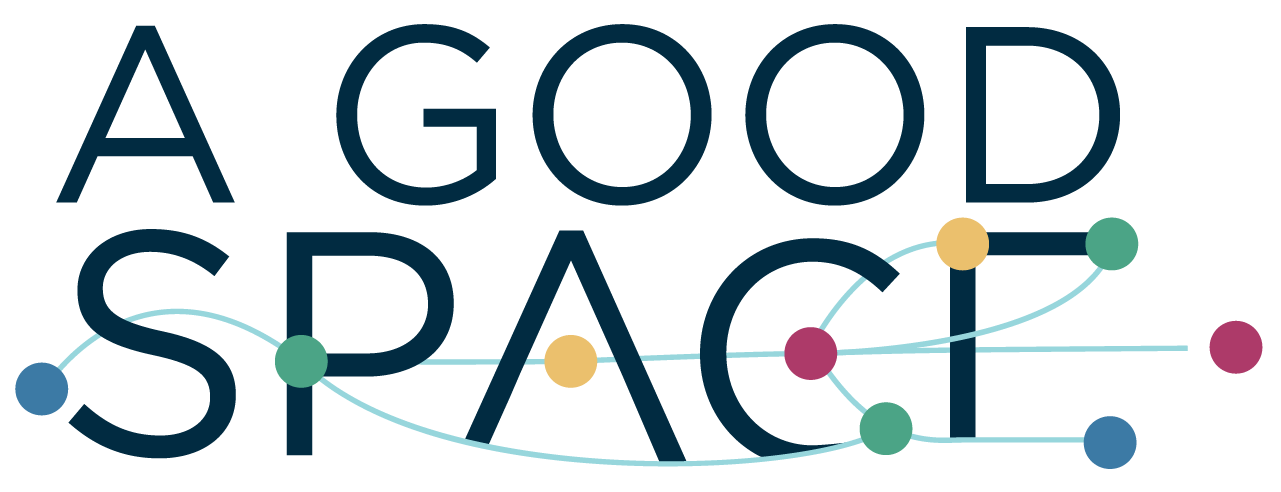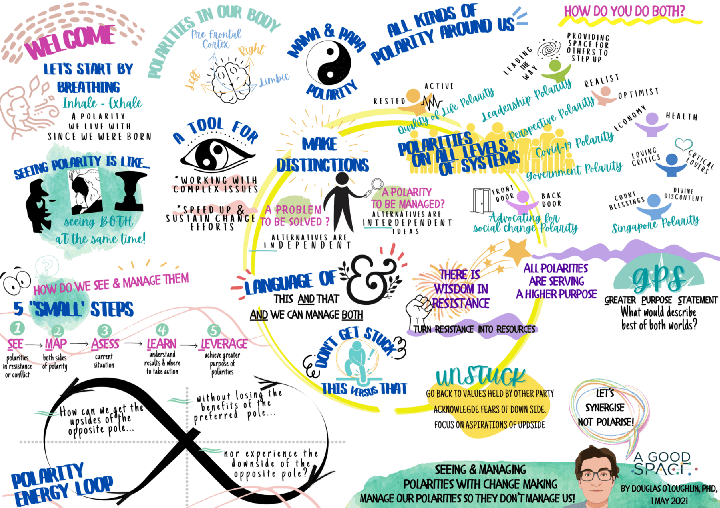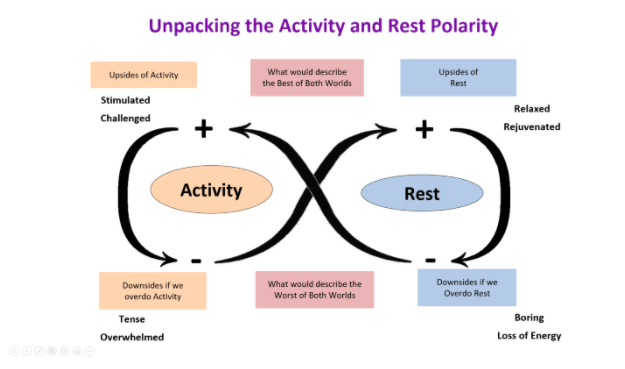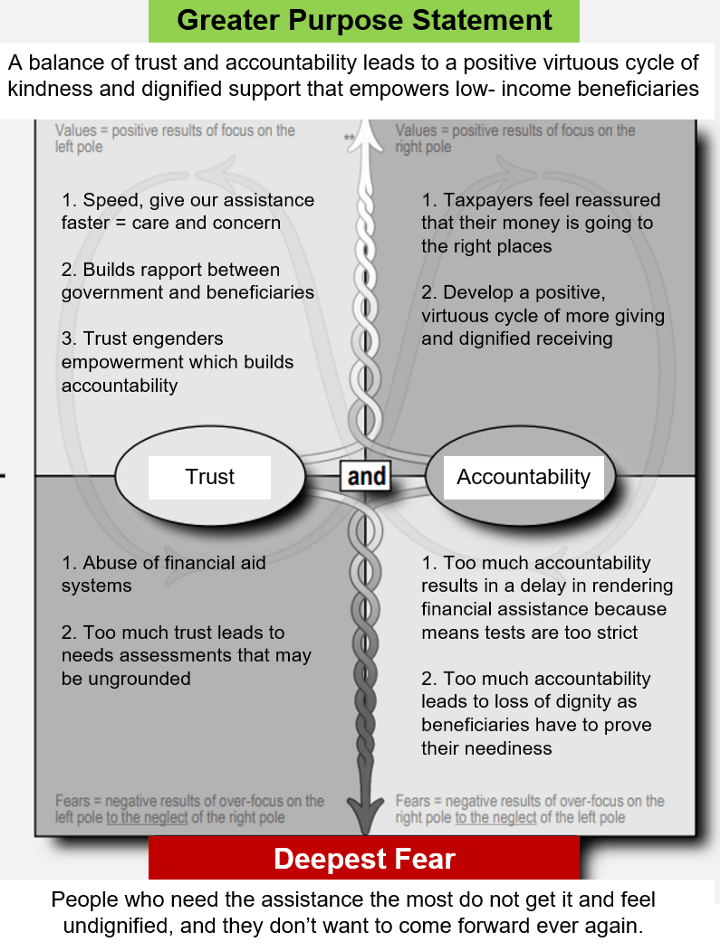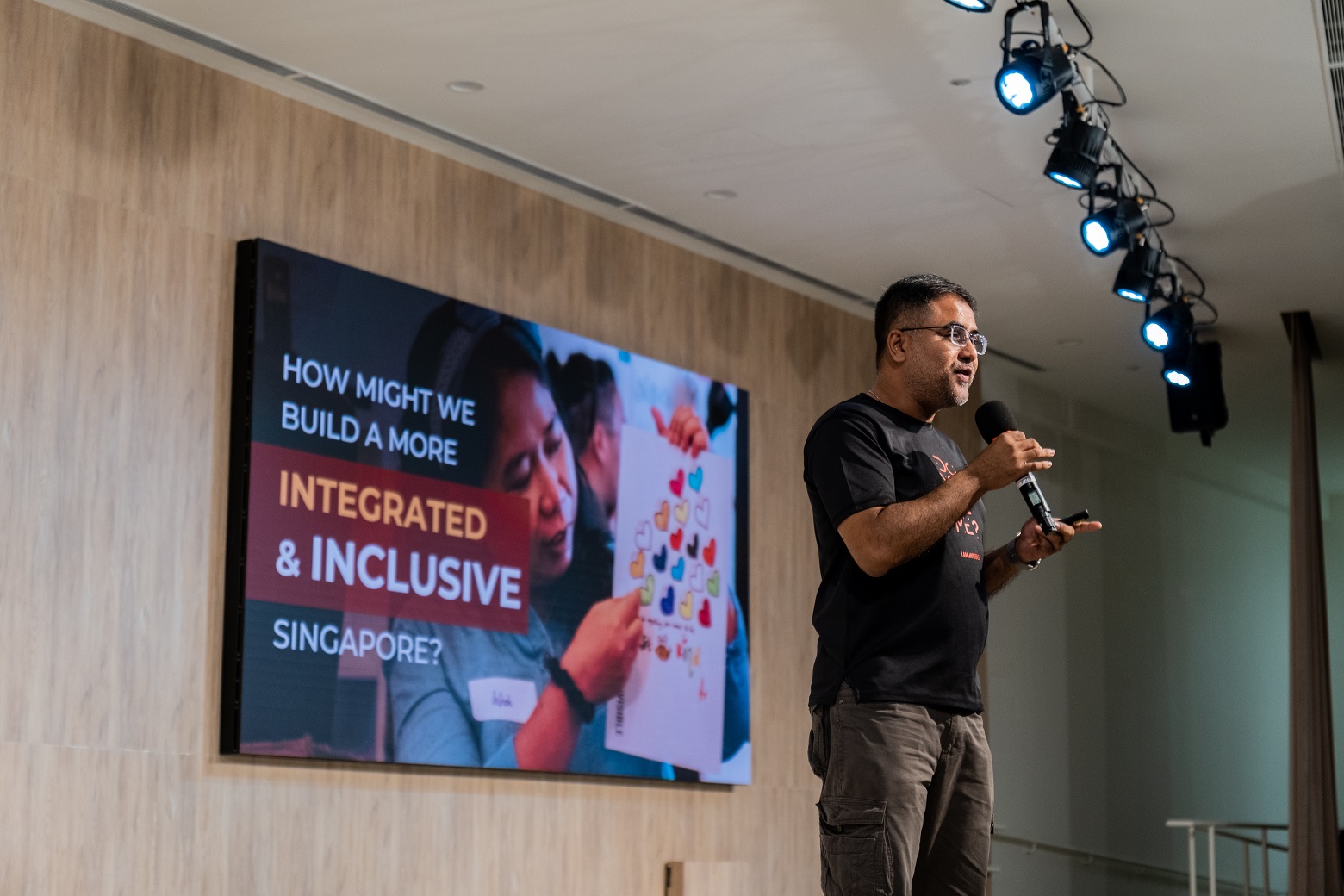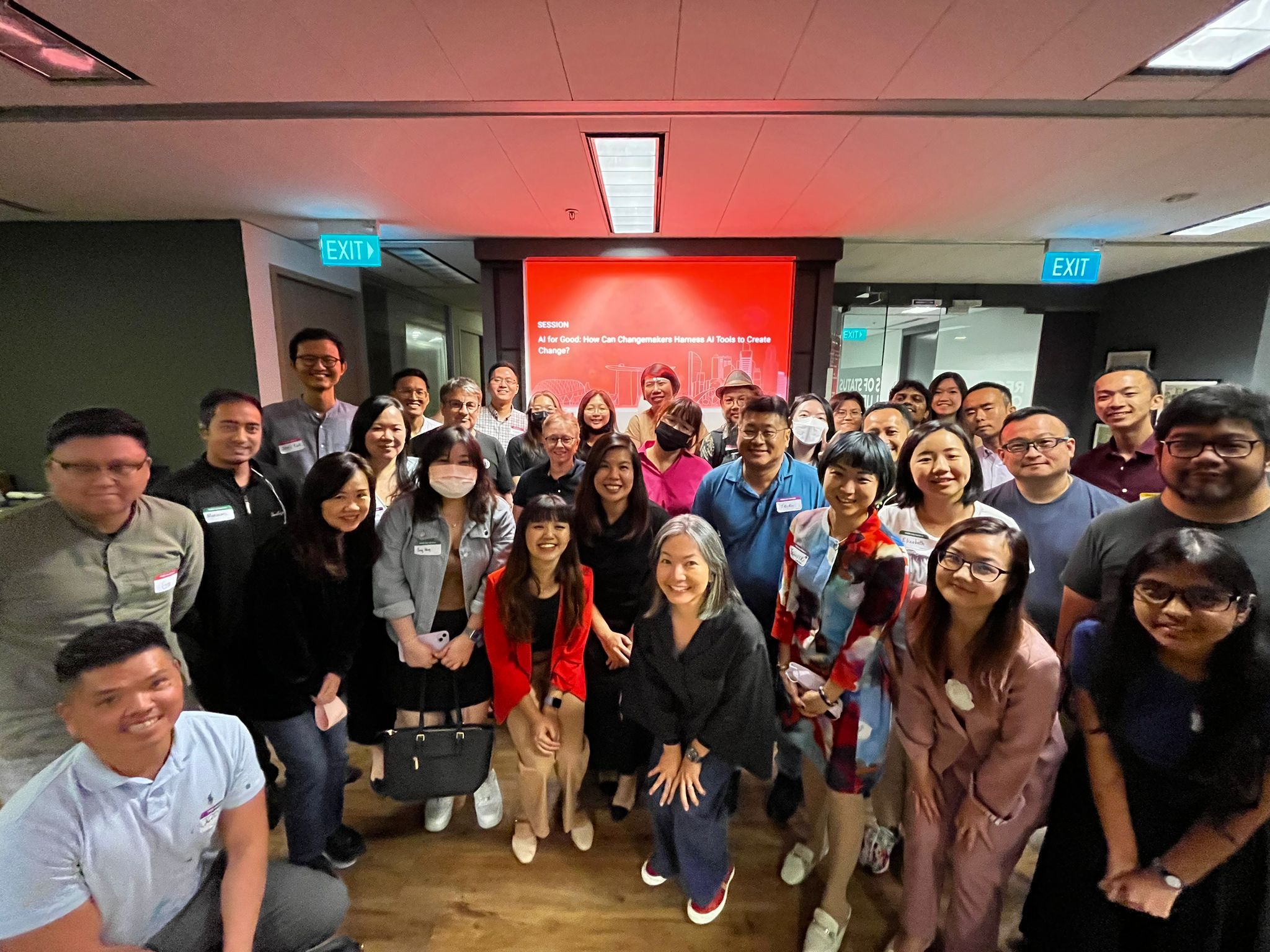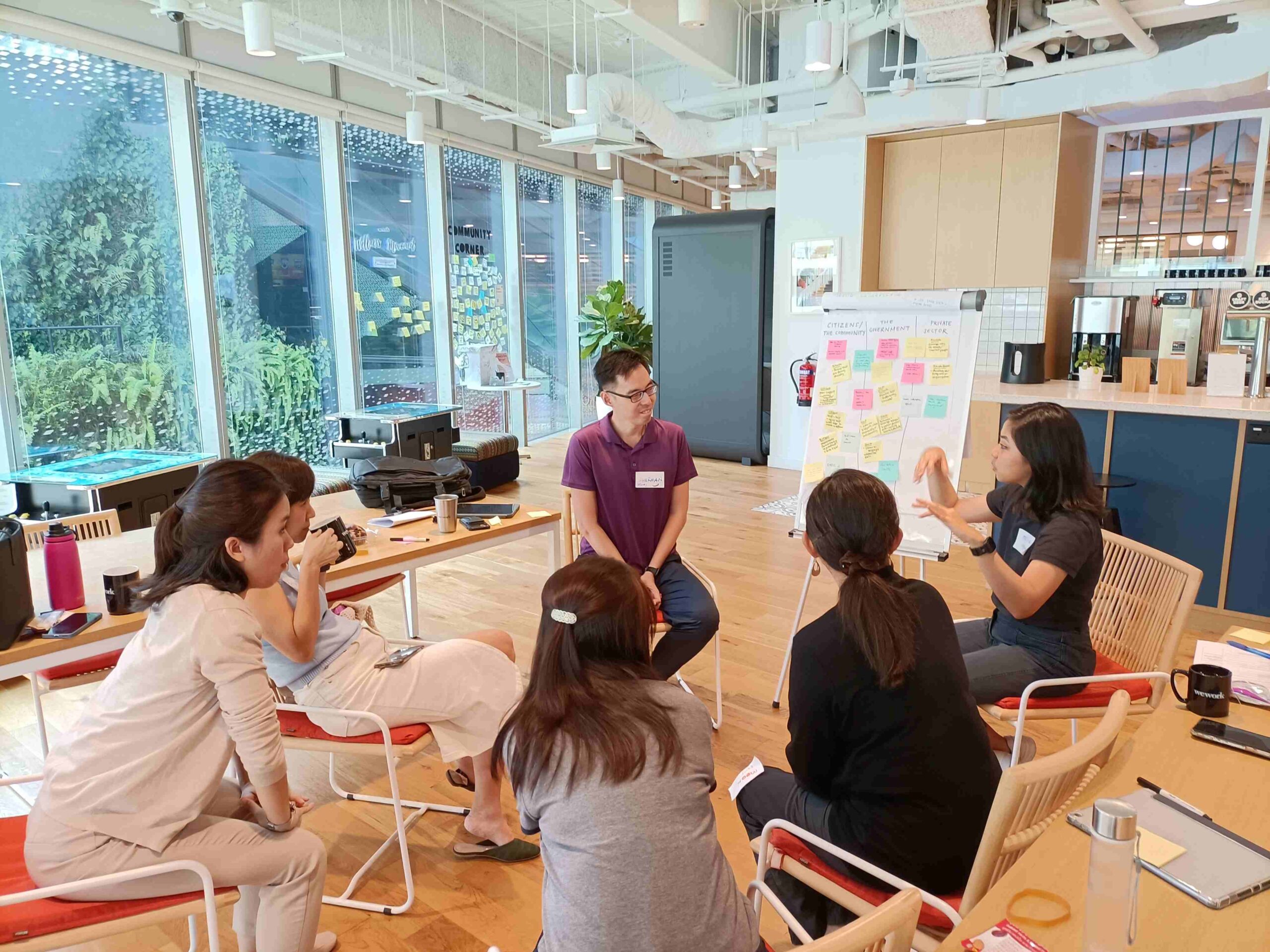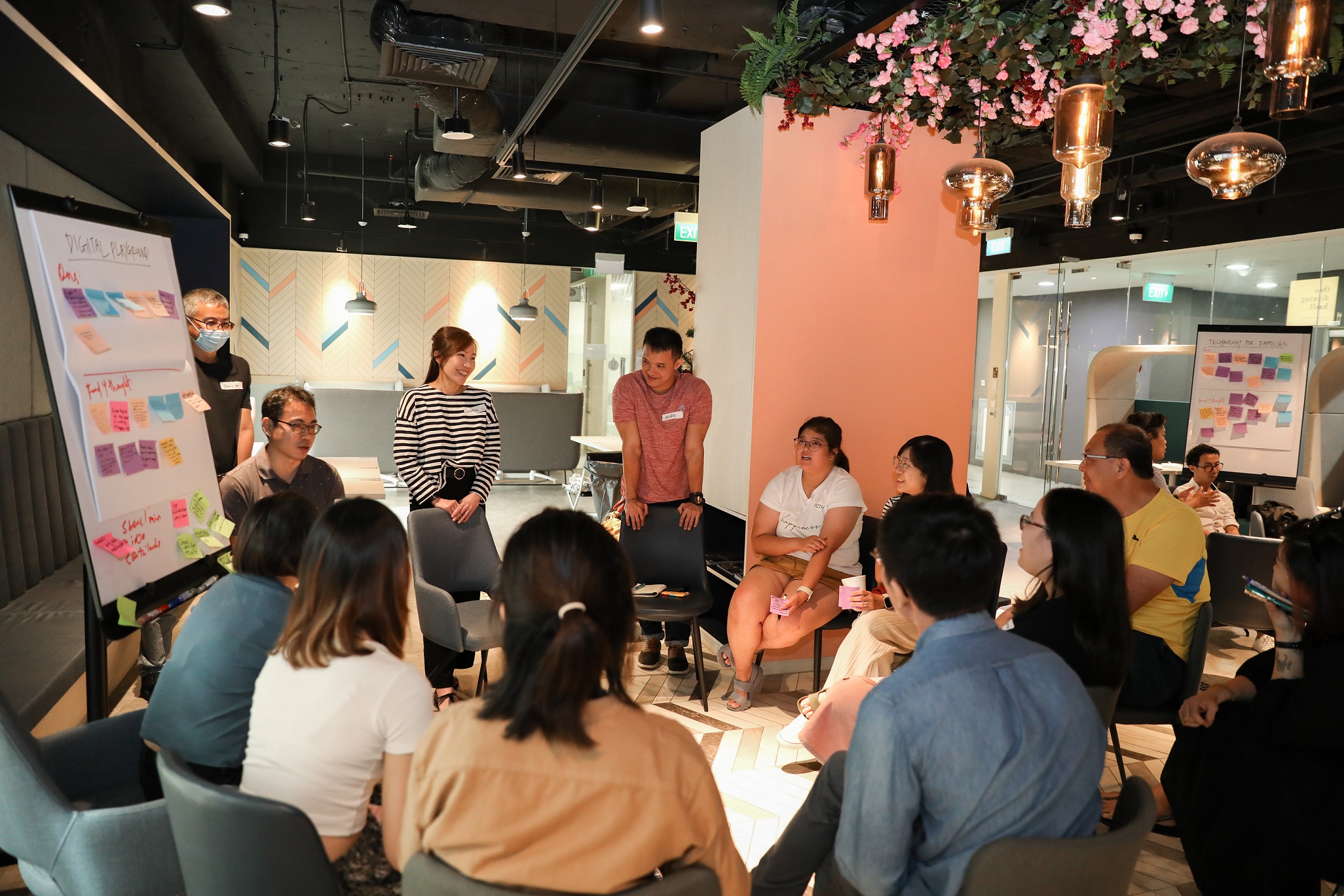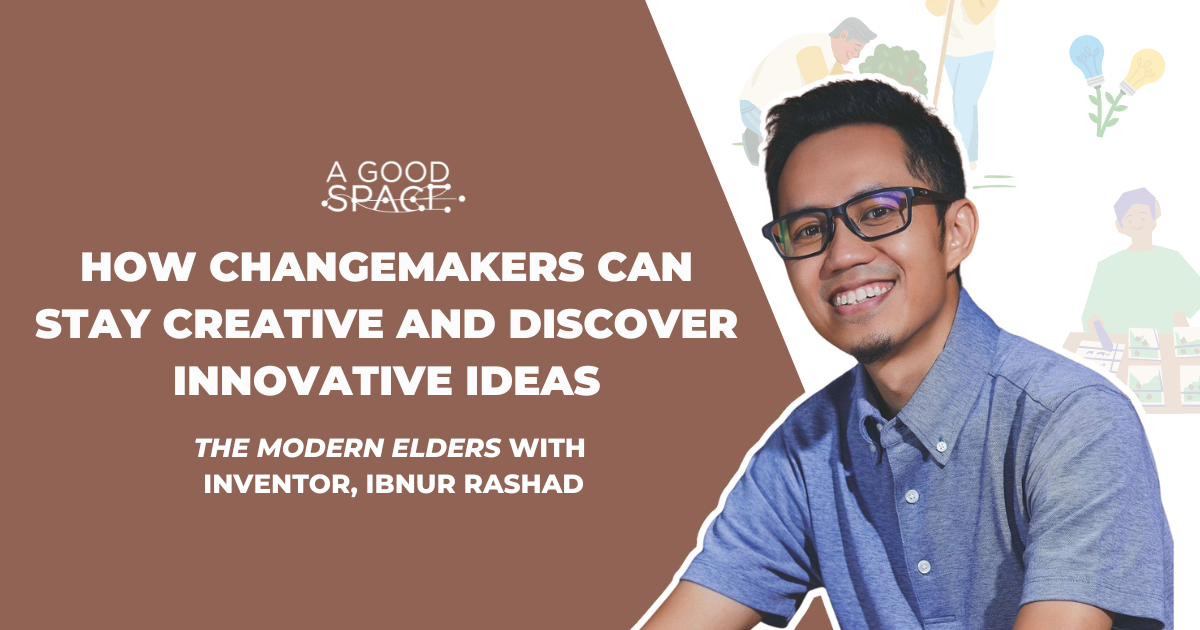Out beyond ideas of wrongdoing and rightdoing, there is a field. I’ll meet you there. When the soul lies down in that grass, the world is too full to talk about.
— Rumi, 13th Century Persian Poet
On Labour Day, one of A Good Space’s members, Douglas O’Loughlin facilitated a really insightful workshop on the concept of Polarity Thinking for the changemakers in our community and some new friends who joined in.
As someone who’s so comfortable seeing things as black and white, I found the concept of Polarity Thinking to be quite refreshing. The idea of seeing seemingly opposite concepts not as in competition but as two inter-dependent poles was fascinating.
It got me thinking: what new possibilities might open up in both our personal lives and our changemaking work if we embraced Polarity Thinking instead of Binary Thinking?
In this short article, I hope to share some of the key ideas I took away from Douglas’ workshop. May it be spark new ideas and possibilities for you!
• • •
Polarity Thinking: Going from ‘Versus’ to ‘And’
When Douglas first introduced this concept, it dawned on me that in life, we see many things as competing ideas where we can only have one or the other. In actuality, they could be polarities that are inter-dependent on each other.
For example, the polarity of activity and rest is one that I struggle with a lot (and perhaps, many of us do). I am often stuck with the mindset that I have earned the right to rest, only when I have done productive work. Likewise, I also viewed working and resting as two completely separate entities.
What struck me in Douglas’ presentation of Polarity Thinking is that instead of them being competing ideas, work and rest are actually an inter-dependent pair.
To do good work, we need good rest. To have good rest, we need good work. Instead of pitting activity and rest against one another, could I enjoy both activity and rest at the same time?
Take the example above, the upsides of activity (or work) are that we feel stimulated and challenged. Yet, if we are too active or push ourselves beyond our limits, there are downsides too — we feel tense, overwhelmed and over a prolonged period of time, we might feel burnt-out.
That’s when we usually start feeling like we need to rest and we start to shift into the upsides of rest, where we feel relaxed and rejuvenated. But if we rest too much, then the downsides of rest begin to come in: we feel bored, restless and want to get into activity again and the cycle continues.
The question that came up for me was:
How can I begin to notice where I am on the poles of activity and rest? And if I am on the downside, how can I find a healthy way to move to the upside?
Other possible polarities include:
• Change and Stability
• Making a Positive Difference and Earning a Fair Amount of Money
• Optimism and Pragmatism
• Responsibility and Freedom
• And many more in our lives…
Is This a Problem to Solve or a Polarity to Manage?
Douglas also explained the distinction between a problem and a polarity. A problem can have a right (or even best) answer. A solution exists for it and we pick the solution from a variety of possible solutions. Once you pick one solution, you cannot pick the other.
On the other hand, a polarity (also described as a paradox, conundrum or contradiction) is a dilemma that is ongoing, unsolvable and contains seemingly opposing ideas that are inter-dependent.
One cannot solve a polarity by making a choice. All polarities contain two pairs of truth that need each other over time.
For example, “should we hire this person for this position” is an example of a problem. A solution exists and you can pick the solution (hiring the right person) out of a variety of solutions. But once you hire a person, you cannot hire another.
Whereas “directive and inclusive leadership is a polarity”. While these ideas seem to be opposing, they are actually inter-dependent. There are upsides and downsides to both directive and inclusive leadership. A good leader can find the best of both worlds.
Douglas shared a quote from Barry Johnson, founder of Polarity Partnerships that might be helpful as we approach various situations and events in our life:
Is this a problem we can solve or is it an ongoing polarity, paradox or dilemma that we must manage well?
The thought that struck me was: what if social issues weren’t only problems to be solved but polarities to be managed? Might the “both” / “and” lens of polarity thinking help expand the possibilities for action available to us?
I was in a breakout group where we explored the polarity of Trust and Accountability (see our Polarity Map below), as it relates to financial assistance to low-income individuals and families.
One major upside in trusting individuals and families when it comes to financial assistance is that it allows aid to be disbursed much faster, without the need for extensive means-testing. This can prove to be very useful during an emerging crisis like COVID-19. On the other hand, one downside of trust is that it can lead to an abuse of financial aid systems.
If we visit the other polarity of accountability, the upside of accountability is that taxpayers are reassured that their money is going to the right places. Conversely, the downside of accountability is that it can lead to a loss of dignity as beneficiaries have to constantly prove their neediness.
As we recognize this polarity, perhaps a better question to ask is:
How can we have a balance of trust and accountability that leads to a positive virtuous cycle of kindness, and dignified support that empowers our low-income families?
Perhaps it is this ability to be able to sit with seemingly opposing ideas that gives us more nuance as changemakers — it helps us see into the issues better and gain more possibilities for action.
Polarities Can Exist at Different Levels of the System
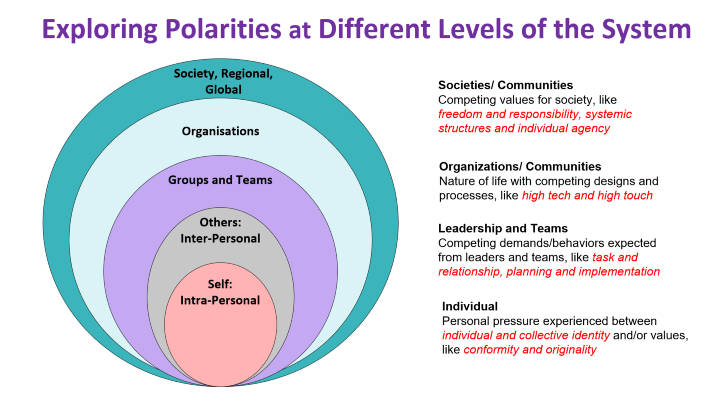
Polarities can also exist at different levels of systems. It could be polarities we experience in our personal lives like Activity and Rest or polarities on a larger scale such as Health and Economy, the prevailing polarity for many countries during this COVID-19 pandemic.
I was struck by the idea that: as we begin to see polarities in our own lives and at wider levels of the systems that we changemakers operate in, what new possibilities might open up for us?
Working with Polarities: A 5 step process
Now that we are aware of polarities, how can we work with them? Douglas suggested adopting a 5 step process, with the acronym SMALL, which comes from Barry Johnson and Polarity Partnerships.
• Seeing — becoming aware of polarities in our lives
• Mapping — map the upsides and downsides of a polarity (as we did above)
• Assessing — how is your current situation in relation to a polarity?
• Learning — where can you start with action?
• Leveraging — achieve the greater purpose of your polarities
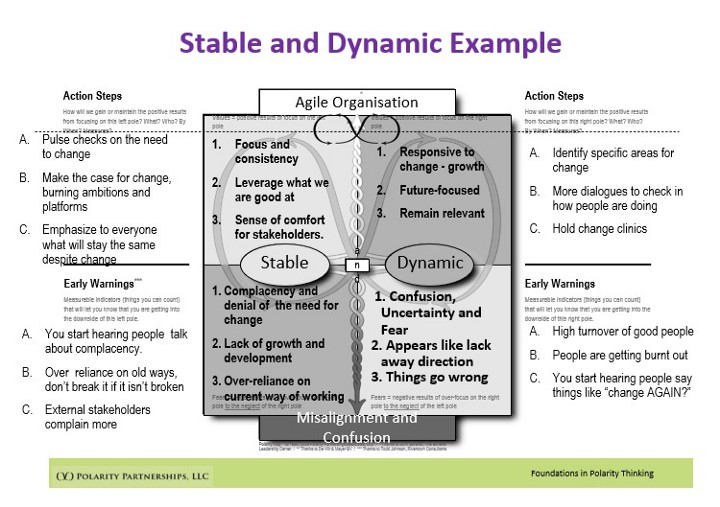
For example, in the polarity of Stable and Dynamic above, he has mapped:
• the upsides stability (e.g. focus and consistency) and dynamic (e.g. responsive to change) and downsides of stability (e.g. complacency) and dynamic (e.g. confusion)
• the early warning signs for the downsides of stability and dynamic
• the action steps to get from the downside of stability to the upside of dynamic
In leveraging polarities, it is also useful to create a Greater Purpose Statement that captures: how can we get the upsides of both poles? (i.e. what will happen if we achieve both stable and dynamic?)
In the example above, Douglas has identified the greater purpose statement to be “an agile organisation”.
How to manage polarities
Douglas also shared with us that when it comes to any type of change, people are not necessarily afraid of the opposite pole. They are worried about the downsides of the opposite pole.
Folks who are comfortable with the pole of Stability are not necessarily afraid of the pole of Dynamism. They are worried about the downsides that dynamism can bring and therefore they resist change.
Getting unstuck requires starting with acknowledging their fears, exploring the upsides of Dynamism with them and co-creating how they could achieve both the upsides of Dynamism and Stability, together.
Telling people the benefits of the polarity we believe in or the negatives of the polarity they are stuck in doesn’t necessarily work. We have to meet them where they are.
When we push for change, we may accidentally create polarisation with those who prefer safety and stability or have change fatigue.
In closing, Douglas mentioned that polarity management is at the heart of transformation and the fastest way to guarantee that a change effort will not be sustainable is to tie it to one pole of a polarity.
• • •
Closing
What if we could map polarities that we experience or polarities that occur in the issues or communities that we work with? Might that open up new possibilities of action for us? I wonder…
This is just a short primer into the concept of Polarities and I feel there’s just so much more wisdom to learn from Douglas about this. So, if you are interested in learning more about the concept of polarities, you can reach Douglas at: douglas@thedaoofthriving.com
After reading this, are there any polarities that resonate with you? What key polarities do you experience most in your life or your changemaking work?
I’d love to hear about what’s coming up for you, comment below to share your views! At A Good Space, we try to support the growth of our changemakers by sharing wisdom from workshops like these.
If you’d like to be updated when we write more articles like these, come join our mailing list!

Vincent Ng
Vincent is the General Manager for the A Good Space Co-operative. As a person in recovery from a mental health condition, he first became involved in community issues as a result of his diagnosis. Over the years, he has cultivated a passion for education and contributing to positive social change, in whatever way he can.
